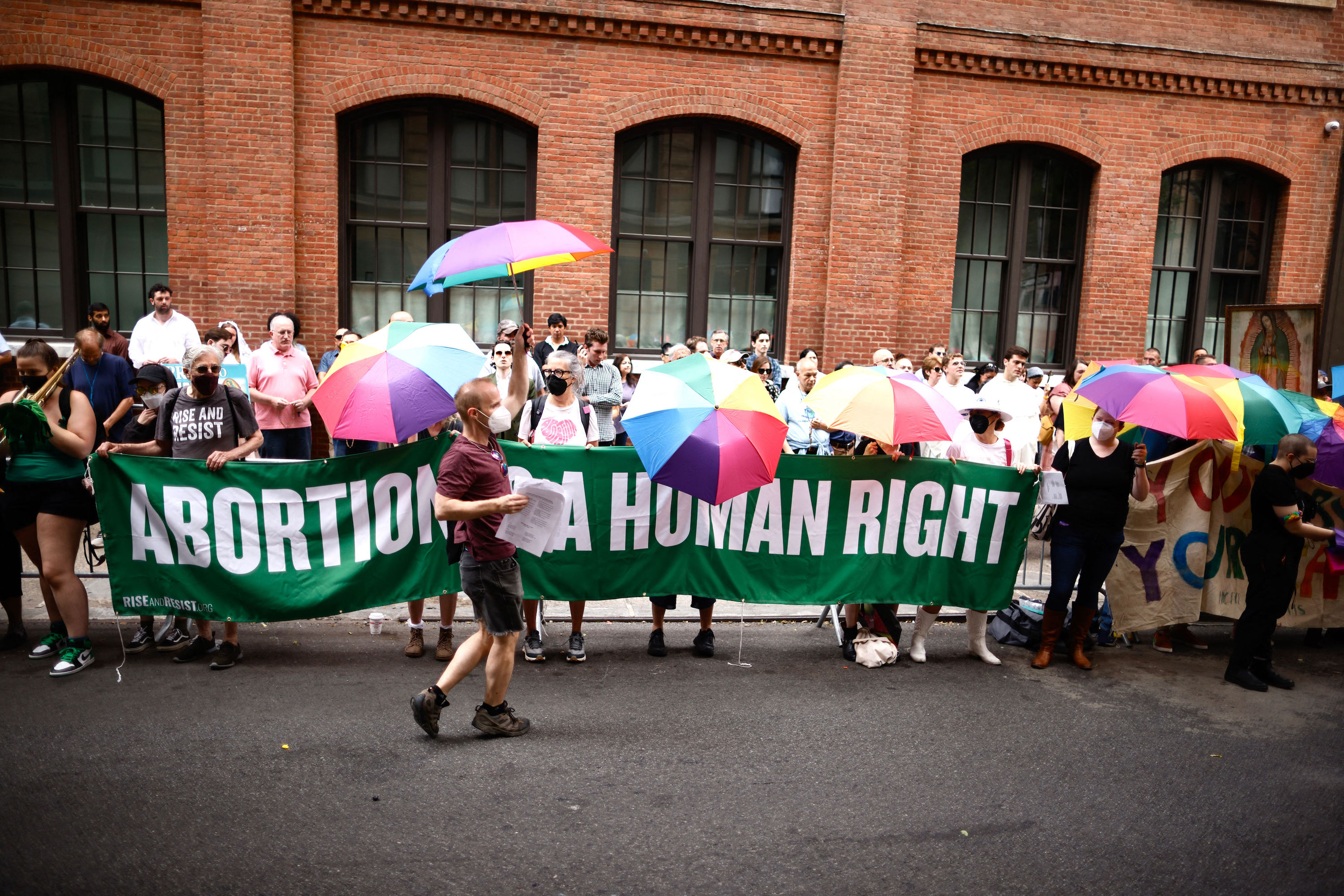The abortion wars aren’t over, and the likely result won’t look much like what either camp is imagining today. Donald Trump understands this, as shown in his recent offer to bring both sides together for a compromise. Does anyone else?
A few lefty pundits do, which is why you see New York Times columns reassuring readers that yes, Donald Trump is still rabidly anti-abortion: “Trump is triangulating. He sees, correctly, that the Republican Party is now on the wrong side of the public on abortion. By rejecting a blanket ban and making a call for compromise with Democrats, Trump is trying to fashion himself as an abortion moderate, a strategy that also rests on his pre-political persona as a liberal New Yorker with a live-and-let-live attitude toward personal behavior. There is a real chance this could work.”
A lot of pro-life advocates, meanwhile, remembering Trump’s promise to get Roe v. Wade overturned, see this as a betrayal. But Trump kept his promise to appoint pro-life justices, and Roe v. Wade was in fact overturned. The question Trump is moving to answer, ahead of everyone else in the 2024 presidential field, is what comes next.
Immediately after Roe was struck down in 2022, many red states enacted strict abortion bans essentially banning abortion at any point during pregnancy. (Some were “trigger” laws passed years earlier, to take effect—be triggered—upon an overturn of Roe.) Many blue states, on the other hand, enacted super-liberal abortion laws allowing abortion at essentially any point during pregnancy.
This was an echo of the sharp moral and ideological divide that followed the Roe decision. But it didn’t have to be that way.
Before Roe, the democratic process was at work, with states like New York, New Jersey, and Colorado relaxing their laws to make abortions easier to get. Without Roe, that process probably would have continued, and the result would probably have wound up looking something like Europe, where abortion laws are considerably stricter than what Roe permitted, but fall far short of the sort of abortion bans that existed in most states before Roe, or that exist in many red states today.
When I tell my constitutional law students that most European laws resemble the Mississippi statute upheld in Dobbs v. Jackson (which banned abortion after 15 weeks but permitted it for essentially any reason up to then), they’re surprised, having assumed that anything in Europe must be more liberal than in the United States. But that’s not the case.
In Germany, women who want an abortion face a mandatory three-day cooling-off and counseling period. More than 20 European nations—like Ireland, which recently liberalized its abortion laws—ban abortion after 12 weeks. In Britain, a woman named Carla Foster was recently sentenced to prison for procuring an abortion at 32-34 weeks.
Sweden requires permission from the National Board of Health for a woman to obtain an abortion after the 18th week. Such permission is generally granted in cases of ill health on the part of the woman or the fetus. Abortions are illegal once the fetus is viable.
If Roe had never happened, perhaps the United States would have seen a widespread pattern of abortion being easily available until the 12th or 15th week of pregnancy, much more sharply limited after that, and banned past the point of viability.
Interestingly, that’s what polls show most Americans support. A recent Rasmussen survey showed that 56 percent of Americans think that abortion should be allowed only during the first trimester of pregnancy, with 23 percent believing that abortion should be available throughout, and 21 percent not sure.
People’s intuitions seem to tell them that early abortions are different from late ones. Miscarriages aren’t uncommon, especially in the first trimester (my wife and I had several), and while they’re sad, they don’t really feel like the death of a child to most people.
Post-viability, things feel very different. There’s a sense—captured in the Clinton-era Democratic slogan that abortion should be “safe, legal, and rare”—that the later in pregnancy, even pre-viability, the more important it is that a decision to abort not be a casual one. The later slogan “shout your abortion,” with the suggestion that abortions should be celebrated, sends a different message.
Now that the issue has been politically unfrozen post-Dobbs, I think we’ll see more movement beyond the extremes. That’s what Donald Trump is betting on, anyway.
Glenn Harlan Reynolds is a professor of law at the University of Tennessee and founder of the InstaPundit.com blog.
The views expressed in this article are the writer’s own.

